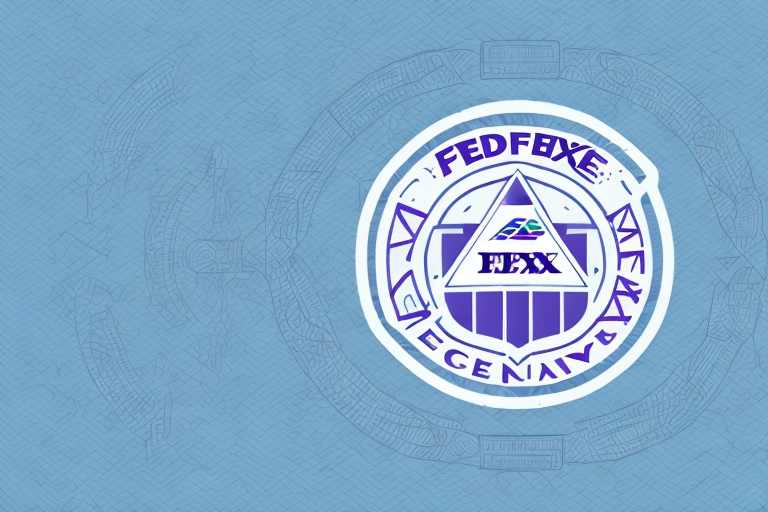Understanding the Default Insurance Coverage Offered by FedEx
When shipping items through FedEx, it's crucial to comprehend the insurance coverage provided by the company. Shipping insurance can safeguard your business from financial loss due to damaged or lost packages. However, the default coverage offered by FedEx may not always meet your specific needs. This article delves into FedEx's default coverage, its limitations, and the additional insurance options available to ensure your shipments are adequately protected.
The Importance of Shipping Insurance for Your Business
As a business owner, protecting the products you ship is paramount. Even with all possible precautions, shipments are susceptible to risks such as theft, damage, or loss. Shipping insurance provides peace of mind by offering financial protection against these unforeseen events.
Common Risks in Shipping
- Theft: Theft can occur at any stage of the shipping process, from the warehouse to the final delivery point. Insurance can cover the cost of stolen goods, preventing significant financial setbacks.
- Damage: Natural disasters, accidents, or improper handling can result in damaged packages. Insurance ensures that damaged items can be replaced without incurring additional costs.
- Loss: Misrouting or logistical errors can lead to lost shipments. Insurance provides reimbursement for the value of lost items, maintaining business continuity.
Benefits of Shipping Insurance
- Financial Protection: Covers the cost of lost or damaged goods.
- Customer Satisfaction: Ensures timely replacement or reimbursement, maintaining trust and reputation.
- Operational Stability: Protects against unexpected financial losses, allowing businesses to remain stable.
FedEx's Default Insurance Coverage: What Does It Cover?
FedEx's default insurance coverage offers protection for packages valued up to $100. This coverage is included in the standard shipping fee for most domestic shipments and some international deliveries. It covers loss or damage to the package or its contents, reimbursing the cost of the item, shipping fees, and any applicable taxes or duties.
Coverage Details
- Monetary Reimbursement: Up to $100 for the value of the shipped items.
- Applicability: Included in standard shipping fees for select domestic and international services.
- Eligible Items: Most consumer goods, excluding perishable items and legally prohibited goods.
For high-value shipments, FedEx offers additional insurance options such as declared value coverage, allowing customers to declare a higher value for their packages with corresponding increased coverage.
The Limits of FedEx's Default Insurance Coverage
While FedEx's default coverage provides a basic safety net, it may not be sufficient for all types of shipments, especially those involving high-value items. Understanding these limitations is essential to ensure comprehensive protection.
Monetary Limits
- The default coverage is capped at $100, which may be inadequate for expensive or bulk items.
- High-value items such as electronics, jewelry, and artwork often exceed this limit, necessitating additional coverage.
Exclusions
- Perishable Goods: Items like food and flowers are typically excluded.
- Prohibited Items: Certain goods deemed illegal or hazardous are not covered.
- Improper Packaging: Damage resulting from inadequate packaging may not be covered.
To mitigate these limitations, businesses should assess the value and nature of their shipments and consider purchasing supplemental insurance as needed.
How to Calculate the Value of Your Shipment for Insurance Purposes
Accurately determining the value of your shipment is crucial for selecting appropriate insurance coverage. Here’s how to calculate it effectively:
Steps to Calculate Shipment Value
- Item Cost: Sum the retail or wholesale cost of all items being shipped.
- Shipping Fees: Include the cost of shipping services used.
- Taxes and Duties: Add any applicable taxes or import duties paid.
- Additional Fees: Consider any other costs associated with the shipment, such as packaging or handling fees.
Considering Sentimental Value
While insurance primarily covers monetary value, some items may hold sentimental significance. Businesses should assess whether the emotional value warrants additional coverage, even if it doesn't translate directly into monetary terms.
For more detailed guidelines, refer to FedEx’s shipment value calculation resources.
Additional Insurance Options Offered by FedEx
FedEx provides several insurance options beyond the default coverage to accommodate various shipping needs:
Declared Value Coverage
This option allows shippers to declare a higher value for their package, with coverage extending up to $100,000. The fee for this service varies based on the declared value, destination, and shipping method.
Supplemental Insurance
For packages exceeding standard coverage limits, supplemental insurance provides extended protection. This option is ideal for high-value items, ensuring comprehensive coverage against loss or damage.
International Shipping Insurance
FedEx also offers specialized insurance for international shipments, covering additional risks associated with cross-border transit, such as customs delays and geopolitical issues.
Explore more about FedEx’s insurance offerings on their insurance options page.
Pros and Cons of Using FedEx's Default Insurance Coverage
When deciding whether to rely on FedEx's default insurance coverage or invest in additional protection, consider the following advantages and disadvantages:
Advantages
- Cost-Effective: Included in the standard shipping fee without extra charges.
- Simplicity: Easy claims process for straightforward loss or damage cases.
- Accessibility: Automatically applied to eligible shipments without additional steps.
Disadvantages
- Limited Coverage: Capped at $100, which may be insufficient for high-value items.
- Exclusions: Certain items and types of damage are not covered under the default policy.
- Scope: Only covers loss or damage during transit, not consequential business losses.
For businesses shipping high-value or sensitive items, evaluating the need for supplemental insurance is essential to ensure comprehensive protection.
How to File a Claim for Damaged or Lost Shipments with FedEx
Filing a claim with FedEx for damaged or lost shipments involves several steps to ensure a smooth reimbursement process:
Steps to File a Claim
- Contact Customer Service: Call 1-800-GoFedEx or visit the FedEx claims portal to initiate the process.
- Provide Shipment Details: Supply the tracking number, item value, and a description of the damage or loss.
- Submit Documentation: Include photos of the damaged package, invoices, receipts, and any other relevant documents.
- Await Investigation: FedEx will review the claim and determine eligibility for reimbursement.
Important Considerations
- Time Limits:
- Damaged Shipments: File within 21 days of delivery.
- Lost Shipments: File within 9 months of the shipment date.
- Documentation: Providing thorough and accurate documentation can expedite the claims process.
- Packaging Standards: Ensure proper packaging to avoid claims denial due to improper packaging.
For a comprehensive guide on filing claims, visit FedEx’s claims guide.
Tips for Preventing Damage or Loss During Shipment
Proactive measures can significantly reduce the risk of damage or loss during shipping, minimizing the need to file insurance claims:
Proper Packaging
- Use durable packaging materials suitable for the items being shipped.
- Utilize cushioning materials like bubble wrap or packing peanuts to secure items.
- Ensure that items are snugly packed to prevent movement during transit.
Clear Labeling
- Label packages clearly with accurate addresses and contact information.
- Include handling instructions such as "Fragile" or "This Side Up" where applicable.
Appropriate Shipping Methods
- Select shipping options that align with the value and sensitivity of the items.
- Consider expedited shipping for time-sensitive or high-value shipments.
Additional Precautions
- Use tamper-evident seals to deter theft and ensure package integrity.
- Implement tracking services to monitor shipments in real-time.
- Separate items within a package using dividers to prevent abrasion or breakage.
Adhering to these practices can enhance the safety and reliability of your shipments, protecting both your business and your customers.
Comparing FedEx's Default Insurance Coverage to Other Shipping Companies' Policies
Choosing the right shipping partner involves evaluating their insurance policies to ensure alignment with your business needs. Here's how FedEx compares to other major shipping companies:
FedEx vs. UPS
- Default Coverage: Both offer similar default coverage, typically around $100.
- Additional Insurance: UPS provides supplemental insurance options comparable to FedEx's declared value coverage, with high-value coverage available up to $50,000.
- Claims Process: Both companies have streamlined claims processes, though specific procedures may vary.
FedEx vs. DHL
- International Coverage: DHL often provides more comprehensive international insurance options, catering to global shipping needs.
- Customization: FedEx offers customizable insurance plans similar to DHL, allowing businesses to tailor coverage to specific requirements.
FedEx vs. USPS
- Cost: USPS generally offers lower-cost shipping options with basic insurance, but may lack the extensive coverage options provided by FedEx.
- Coverage Limits: FedEx typically offers higher insurance limits compared to USPS’s standard coverage.
It's essential to assess the specific insurance policies of each shipping company to determine which best meets your business’s protection needs. For a detailed comparison, refer to industry reports such as those from the American Express Shipping Insights.
In conclusion, understanding FedEx's default insurance coverage and evaluating additional options is vital for protecting your business against shipment-related risks. By selecting the appropriate coverage and implementing preventive measures, you can ensure that your shipments arrive safely and your business remains resilient.




















